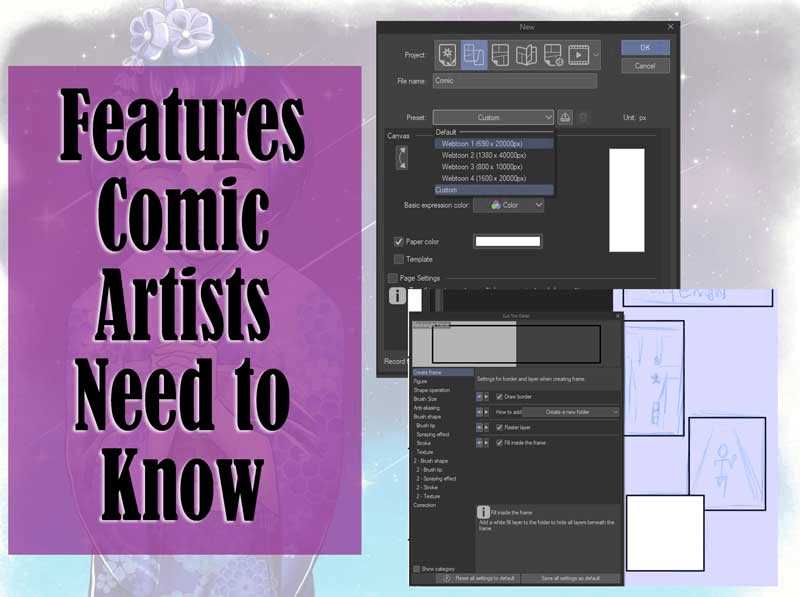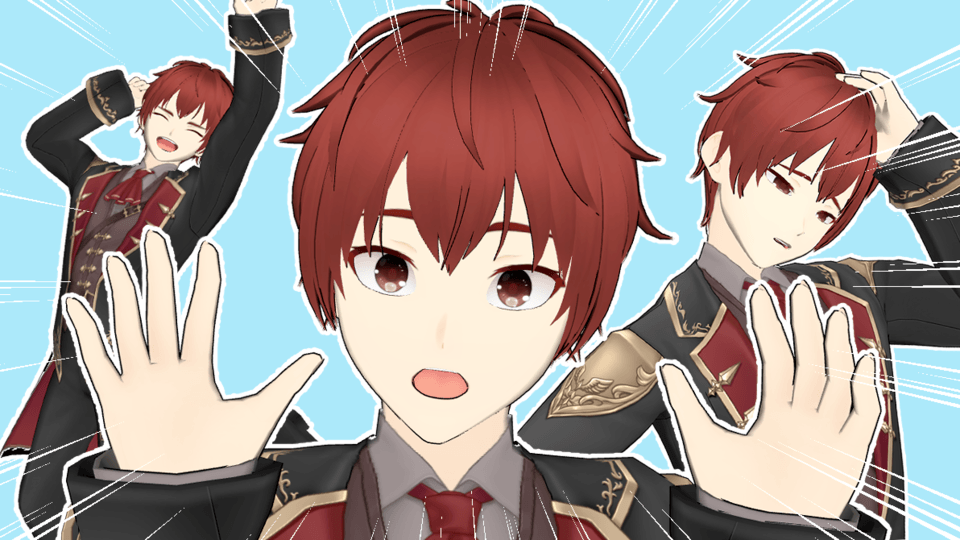Draw Mouth, Lips, Teeth and More!
When drawing a face, mouth can give uniqueness to our characters’ faces. On top of that, we can create complex facial expressions using mouth, making our art dynamic and more attractive.
Personally I prefer to draw mouth in simple styles commonly found in anime. But, knowing how to draw in semi-realistic style helps me in drawing facial variations when making unique character designs. So, even if semi-realistic isn’t your preferred drawing style, you still can gain things to improve your art by learning it!
Starting with the basics of the mouth and lips, we’re going to dive into how to draw lips using contours and drawing a whole set of teeth, followed by hot to apply teeth to an open mouth. Also, we’ll talk about how to draw various dynamic mouth expressions based on simplified mouth styles. This tutorial will be ended by how to color the mouth, lips, teeth, tongue and also the skin around the mouth.
Let’s get started!
Mouth Basics
We cannot rarely talk about mouth without lips, can we?
Lips serve as a protective cushion for our teeth, that’s why it’s puffy. Thanks to that, lips are protruding from our face, and if seen from above or below it’ll look curved instead of flat.
Because of the curve, one of the corners of the mouth will not be visible from certain angles. A lot of people make this mistake when starting out (including me) and ended up with unnatural looking lips. The key to fix this mistake lies in contouring.
The “contour” of lips exists thanks to plump spots on our lips. The upper lip has three plump spots while the lower lip has two. This is the key to draw lips well, so keep this in mind!
This is the plump spots seen from the side.
Our mouth opening isn’t big enough to make most teeth visible, unlike animals such as dogs and alligators.
Usually only the upper jaw’s front teeth visible. When the mouth is wide open, we can see only half of our teeth at most from the side. Well, talk more about teeth in a later section!
How widely open the mouth is also affect how high or low the corner of the mouth could be. When we smile with our mouth open, the corners of the mouth are about one third away from the top of the upper lip. When closed, the corner of the mouth and the top of the upper lip are almost parallel.
This also holds true when the corner of the lips are lowered. When open, the corner of the lips are about one third away from the bottom of lower lip while almost parallel when the mouth is closed.
Drawing Closed Mouth (Lips only)
“Simple is best” is true when drawing lips. To familiarize ourselves with the shape of the lips, simplify it by using flattened and stacked M-M-U.
Looks like lips already, right?
There are two methods I use to draw lips. One is beginner friendly and the other is better for those who are already used to lips’ contours. Let’s start with the beginner one!
We’re going to draw smiles in two different angles.
Dividing the smile in two helps determining the middle part of the lips. Then draw MMU.
After that, we’ll do the contouring.
You can draw the plump spots first in another layer as reference. Then re-draw the lips with curvier lines, following the plump spots. The simplified version didn’t take this into account, but for the 3/4 view, the left corner of the mouth will be hidden because of the plump spot.
Voila!
The second method forgo the MMU and go straight to contouring. This is faster for sure, but prone to mistakes if you’re not used to the contours. So, proceed with caution.
Teeth
Drawing realistic teeth might be the hardest part when drawing mouth. But, unless you’re drawing a wide open mouth in front view or drawing a skeleton, there’s rarely ever any need to draw the whole set of teeth. Some artists even have styles where it’s not necessary to draw teeth or just draw teeth with simple lines.
Time for orthodontics lesson! On each jaw, we have 4 incisors (yellow), 2 canines (blue), 4 premolars (pink) and 6 molars (green).
Premolars and molars can be based on boxes. The outer crown part of premolars and molars is jaggy and the inner part can be drawn in random as long as they’re centered in the middle.
Now, let’s draw a whole set of teeth. First, draw simple lines as the base, then divide it with vertical lines. (Colors added to show the teeth types.)
Draw arches on the top part where the teeth meet gum. Next, draw lines for premolars and molars “depth”.
Finally, add details and erase unnecessary lines and it’s done. The shadow was added for clarity.
Drawing Open Mouth
Previously we learned that we cannot see one of the corners of the mouth from certain angles. Drawing open mouth makes both corners visible, but you have to pay attention to the angle to determine the placement. The angle of the left corner gets wider as the face turns to face the front.
Don’t forget to draw both corners of the mouth. Also, keep in mind that both corners should be parallel to each other!
Drawing open mouth uses the same steps from drawing closed mouth. Simplified version first, determine the middle part, then use plump spots to help contouring.
To add teeth, draw the teeth base loosely on another layer. In Mouth Basics section we learned that we cannot see the whole set of teeth from the side, it also applies to angled view. Some of the teeth would be obscured from view.
Use the steps from previous section. First, divide the base with vertical lines. Because the gums are covered by lips and tongue, we can skip drawing the arcs and go straight to detail the teeth.
It’s done!
Other Mouth Expressions
With the basics from previous sections, it’s also possible to convert cartoon styled mouth into semi-realistic version. Let’s use these 6 as the samples.
Determine the plump spots. Like before, you can draw it on another layer for reference.
When sketching, use the knowledge about contouring and the placement of the corners of the mouth. Adjustments are needed to keep the semi-realistic look.
Done!
Coloring
For starters, I used Mapping Pen and Watercolor Brush only for coloring.
This is the palette I’m going to use. From left to right: mouth, teeth, skin.
First, draw the base colors. Keep the light source direction (yellow arrow) and lip contours in mind when shading. In this case, only a portion of the tongue that isn’t dark, unlike the rest of inner mouth.
Then, paint the innermost part of the mouth with a darker color than before. This will help making the lips “pop” so that the viewers focus on the lips instead of the inner mouth.
Highlight part of the lips and tongue lightly with Watercolor Brush. After that, add highlight dots with Mapping Pen. Both highlights used the same color.
Shading the teeth is straightforward. Shade the premolars and molars, then the parts that overlaps with the lips and between the teeth.
Next, use a darker color to draw the details of premolars and molars.
Mouth and teeth are done!
While this isn’t coloring face tutorial, there’s some points to keep in mind when painting skin around the lips.
Right on top of the lips, there’s a sunken part called philtrum that connects with the base of the nose. This part must be shaded.
For skin under the lips, because lips are protruding, there will be shadow.
That’s it!
If you like borderless style painting, you can paint over the lines with color.
Outro
Thank you for reading this tutorial until the end. I hope you find it useful.
Drawing lips can be hard at first, but just like drawing anything else, practice and observation are the key. Just… don’t develop habit at staring at people’s lips (like I did!)
Keep on drawing and Happy New Year!
























Comment